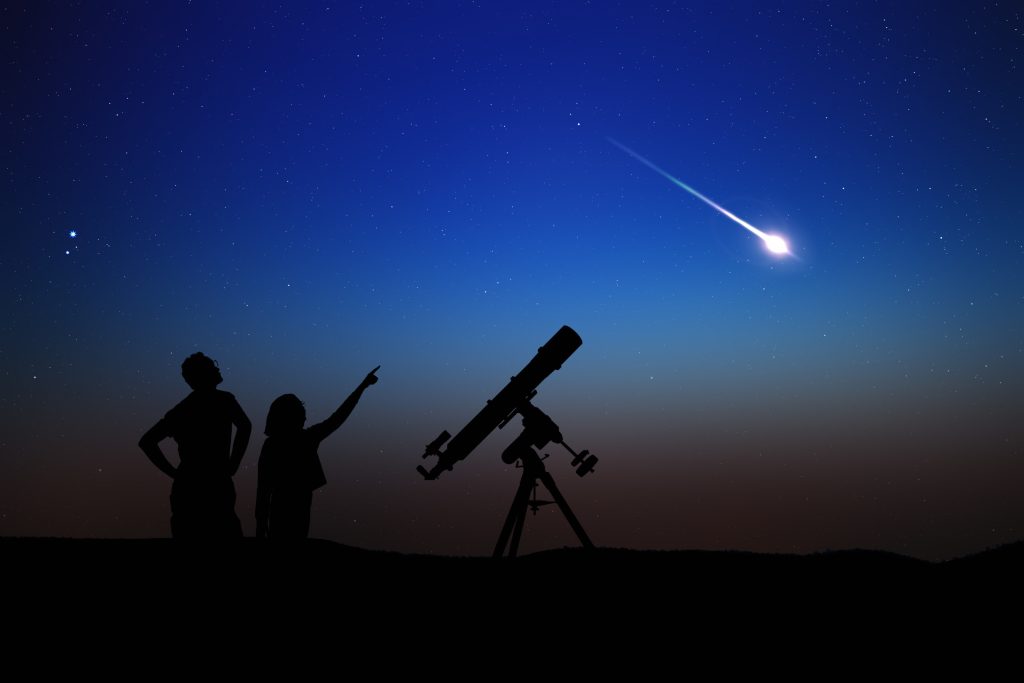Two meteor showers are set to peak within days of each other this week, simultaneously lighting up the night skies across the Southern states.
of Southern Delta Aquarids The meteor shower is expected to peak tonight, July 29th. The Alpha Capricornids meteor shower will peak tomorrow, July 30th.
These meteor showers appear to occur near Aquarius for the Delta Aquarids and near Capricorn for the Alpha Capricornids, but meteors can appear anywhere in the U.S. night sky.
The Delta Aquarids are best viewed from the Southern Hemisphere, but can also be seen from lower latitudes in the Northern Hemisphere, while the Alpha Capricornids can be seen from both the Northern and Southern Hemispheres, meaning southern states have the best chance of seeing both meteor showers.
ISTOCK / Getty Images Plus
“The Southern Delta Aquarids and Alpha Capricornids are two meteor showers that will peak on the nights of July 29th and 30th respectively,” said Gregory Brown, an astronomer at the Royal Observatory Greenwich in the UK. Newsweek.
This year, the Alpha Capricornids can be observed until around August 15th, and the Delta Aquarids can be observed until August 21st. Perseid meteor shower Both meteor showers will peak on August 12 before ending completely.
What are meteor showers?
Meteor showers occur when Earth passes through a debris trail left behind by a comet. As a comet travels through space, it ejects small rocks and dust. When Earth passes through this debris field, these particles enter the atmosphere at high speeds and burn up, creating bright streaks of light in the sky.
“Meteor showers occur when the Earth happens to pass through a stream of dust and debris dropped by a comet. The dust hits the atmosphere, vaporizes at a height of about 80 kilometers (50 miles) above the Earth, and becomes visible from the Earth as meteors (or ‘shooting stars’),” says Jonty Horner, a professor of astrophysics at the University of Southern Queensland in Australia. He previously told Newsweek magazine.
What is the Southern Delta Aquarids meteor shower?
Astronomers aren’t entirely sure which comet is responsible for this meteor shower, but they believe it’s very likely that Comet 96P/Machholz left a trail that triggered these meteors.
This meteor shower occurs at the same time every year and typically produces up to about 25 meteors per hour.
What is Alpha Capricolamide?
The Alpha Capricornids meteor shower is caused by a trail of dust and ice left behind by comet 169P/NEAT. This shower produces fewer meteors per hour than the Delta Southern Aquarids, typically around five per hour, but the meteors in this shower are often brighter and slower-moving, and can produce impressive fireballs that leave lasting trails.
How to observe meteor showers
To best view the meteor shower, find a location free of light pollution where the sky is as dark as possible. Cloudy skies may obstruct your view, so make sure the weather forecast predicts clear skies on the night of the meteor shower. It takes about 20-30 minutes for your eyes to adjust to the darkness, and you should avoid looking at cell phones or bright lights.
of Moonlight The moon can be a big problem when it comes to watching meteor showers. Luckily, on the night of the meteor shower’s peak, the moon will be around 20-30 percent full and will rise just after midnight. This means the best time to watch the meteor shower is between midnight and when the moon rises.
“As with most meteor showers, the best time to view the shower is early in the morning, after midnight, although the chances of seeing it all night are low. Look for a location with little light pollution from cities, preferably low on the horizon. You won’t need a telescope or binoculars here – in fact it’s not a good idea to use them,” Brown said.
Do you have any tips for scientific articles? Newsweek What should we cover? Have a question about meteor showers? Contact us at [email protected].
Rare knowledge
Newsweek is committed to challenging conventional wisdom, seeking common ground and finding connections.
Newsweek is committed to challenging conventional wisdom, seeking common ground and finding connections.


